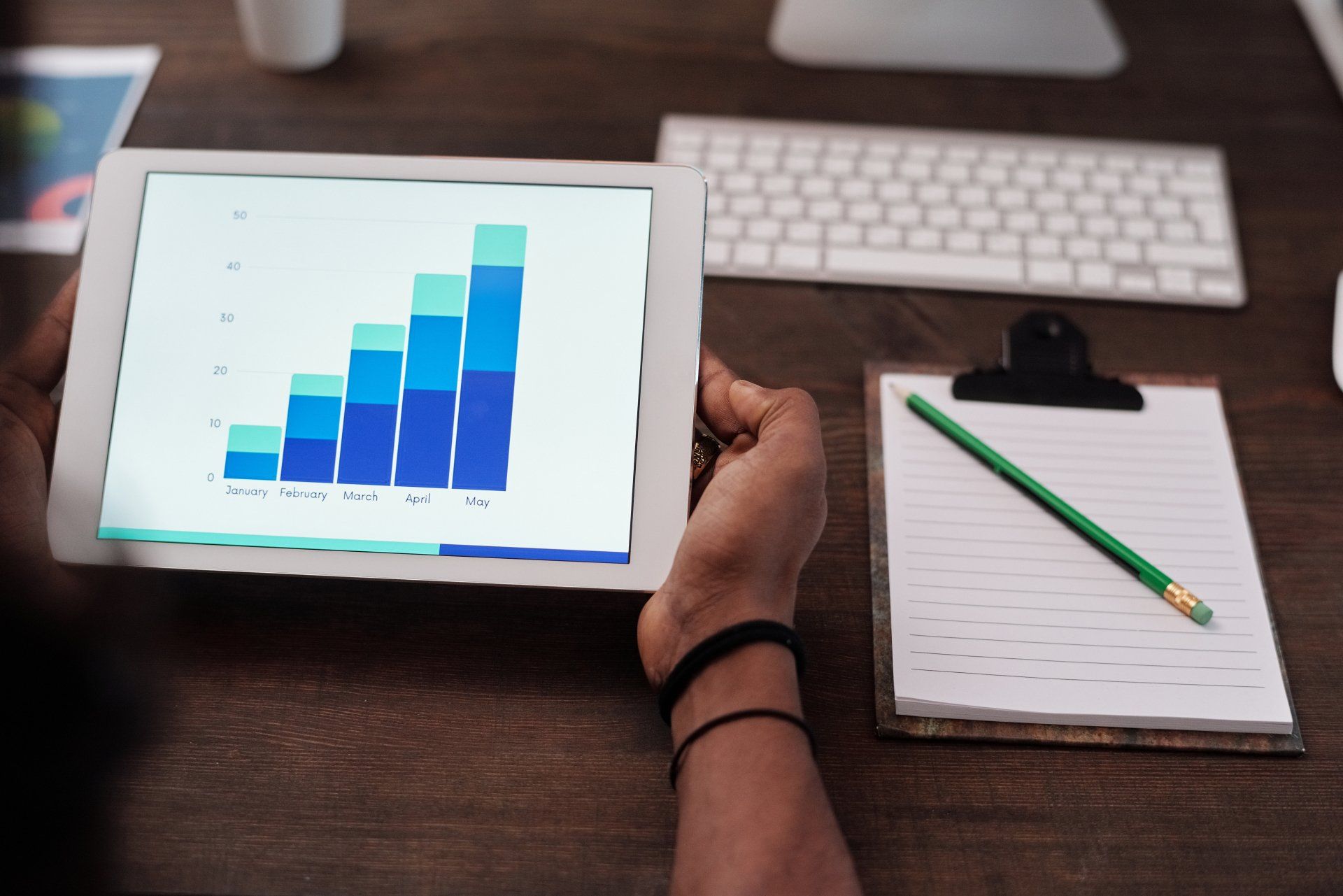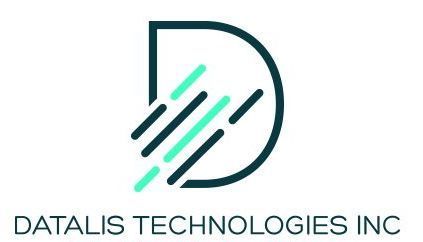A Guide to Business Intelligence and Analytics
A Guide to Business Intelligence and Analytics: How BI&A Can Help Your Business

Learn about business intelligence and analytics and how Datalis Technologies can help you implement BI&A with maximum effectiveness within your organization.
Business intelligence and analytics are important practices that businesses can use to make better data-driven decisions. The terms business intelligence and business analytics are often used interchangeably, but they refer to slightly different things.
Today, most businesses have a lot of data about their customers and the day-to-day operations of their businesses. Used effectively, that data could help business owners predict future sales, manage their supply chains more effectively or make better decisions about staffing and other resources.
What Is Business Intelligence?

Business intelligence is the use of data to manage day-to-day operations. Business intelligence tools help leaders collect and process data so they can better understand their current workflows and track their progress toward certain business goals.
There are many business intelligence tools on the market. Software such as Power BI, Alteryx and Tableau offer sophisticated data processing and reporting tools to help leaders get the most out of their data. On a smaller scale, many organizations rely on their own spreadsheets and charts or the analytics tools provided by their online store platforms to generate reports.
Business intelligence is something organizations of all sizes can use. If you're looking at data you've collected and using it to address operational challenges or make decisions about the future, you're using business intelligence.
The idea behind business intelligence isn't new. The term was first used in 1865 by Richard Millar Devens, who wrote about a banker who collected intelligence on the market as a way to gain an edge over his competitors. The first computerized BI tools were deployed in the late 1950s, although they were called decision support systems rather than business intelligence tools.
In the 1950s and '60s, only very large businesses had access to computers, making BI systems relatively rare. Today, almost any organization can take advantage of BI tools to add business value.
What Is Business Analytics?

Just as business intelligence relies on data, so too does business analytics. The difference is in how the data is handled. Business analytics is a much more statistics-focused field.
Let's consider the example of an online store. Using business intelligence, you could look through past purchases and build profiles of your customers, learning where they're from and what they're buying. That information can be used to inform marketing campaigns.
Business analytics helps you predict what your customers might do in the future. It uses the data you've gathered along with quantitative tools and statistical methods to help you make well-informed forecasts.
Some techniques used by business analytics specialists include:
- Regression analysis
- Correlational analysis
- Text mining
- Factor analysis
Those terms may sound like meaningless jargon, but they're important data science terms that describe the methods used to extract and process data so it can be used to make predictions or provide a better understanding of the health of your business.
Analytics can be a complex subject, and working with a data analytics consulting firm could help you ask the right questions and make sense of the data you've gathered.
Combining Business Intelligence and Analytics

Today, business intelligence and analytics are often used in tandem. Because so many aspects of day-to-day business operations are computerized, huge volumes of data are available.
The challenge for business owners is knowing how they can use that data, and what it can tell them. If you're not currently using BI and analytics tools, you may be unsure about how business intelligence fits in with any data protection and privacy regulations your organization needs to follow.
You may be wondering:
- What data am I allowed to collect about my customers?
- Can I share the data I already have with third parties?
- How much historical data do I need to make predictions about future sales?
- Can I consolidate data from more than one source?
- How do I import data from my in-house database into a BI tool?
As data analytics specialists, we can answer those questions for you and help you understand how to best use business intelligence and analytics in your business. As part of our management consulting services, we'll explore your current data collection practices and workflows and design a BI&A solution that will give you valuable insights into your business.
The Different Types of Business Analytics
Business analytics can be divided into four key categories:
- Descriptive Analytics: This type of analytics involves summarizing past data and looking at historical trends. It can be used to uncover key performance indicators, identify trends and offer information about customer behavior.
- Diagnostic Analytics: If descriptive analytics looks at the "what," diagnostic analytics attempts to answer "why." For example, if your charts show a fall in sales, diagnostic analytics would help you go a step further, looking into factors that correlate with that decline and, potentially, identifying the cause.
- Predictive Analytics: Predictive analytics attempts to forecast future customer behavior, anticipate market trends or simulate how certain changes might impact your bottom line. These predictions aren't guaranteed to be correct, but predictions based on high-quality data can be a helpful planning tool.
- Prescriptive Analytics: Building on the forecasts made using predictive analytics tools, prescriptive analytics suggests potential actions and shows what their outcomes could be. A restaurant owner could use prescriptive analytics to trigger a warning if they had an unusually high or low number of bookings compared to normal, along with predictions for how those bookings might impact demand for perishable items in their inventory.
Every business has different needs and access to different kinds of data. Before you can make full use of the potential of business information and analytics tools, you need to be familiar with the data you have available to you and have an understanding of what BI&A tools can model.
At Datalis Technologies, we have extensive experience in the world of business analytics and can offer training, advice and support to help business owners make full use of their data.
How BI&A Can Add Value to Your Business
It's more important than ever for businesses to be agile. Today, both B2B and B2C marketplaces are highly competitive, and the companies most likely to succeed are the ones that can respond quickly to new information.
Business intelligence and analytics take the guesswork and emotion out of making decisions. These practices also help leaders better understand the data put in front of them.
Some things that Business intelligence and analytics can help with include:
Cost Savings
BI&A tools give leaders better visibility into their processes, helping them see areas for improvement. This can assist organizations in using their existing resources more effectively and optimizing their workflows.
Faster and More Accurate Decision-Making
By providing data-driven insights into everything from supply chains to customer behavior, BI&A tools give leaders the information they need to make well-informed decisions more quickly and with confidence.
Better Strategic Planning
Business analytics doesn't have to be limited to data from within your business. It can also be used to provide insight into market trends. Armed with this information, you'll be in a better position to respond to changing market conditions.
A Better Customer Experience
The more you know about the needs, wants and behaviors of your customers, the better equipped you'll be to serve them. The data provided by BI&A tools can help you deliver a faster, more efficient service that better matches the expectations of your customers.
Do You Need BI and Analytics?
The information that business intelligence and analytics tools can provide is useful for organizations of all sizes. Whether you're a B2B or B2C business, having the ability to view, quantify and interpret data about your finances, customers and inventory is invaluable.
BI&A tools help leaders understand complex data and can turn that data into actionable insights. Whether you're a small business owner with limited time and resources, or you're leading a growing organization and need to be able to scale effectively, business intelligence and analytics tools can help you achieve those goals.
All too often, business leaders rely on gut feeling when making important decisions. While smaller organizations can do this, as your business grows and there are more moving parts to take into account, intuition becomes a less useful tool.
A small business owner with one or two branches can keep information about each branch in their head and trust their intuition is based on knowledge and experience. As the business grows, gaining a larger customer list, more employees and more sites, it's harder for one person to keep track of all of the factors they need to consider when making operational decisions.
Business intelligence and analytics tools provide an at-a-glance overview of all of that information, turning a sea of numbers into something easy to understand.
Implementing BI&A For Your Business
Setting up your BI solutions and understanding how to process the information you have access to can seem like an intimidating task. At Datalis Tech, we offer business intelligence and data analytics services in Wesley Chapel, FL. If you run a tax, accounting, financial, retail or manufacturing business, we can help you unlock the power of your data.
Contact us today to learn more about how business intelligence and analytics can propel your business to success.
Datalis Technologies Blog











